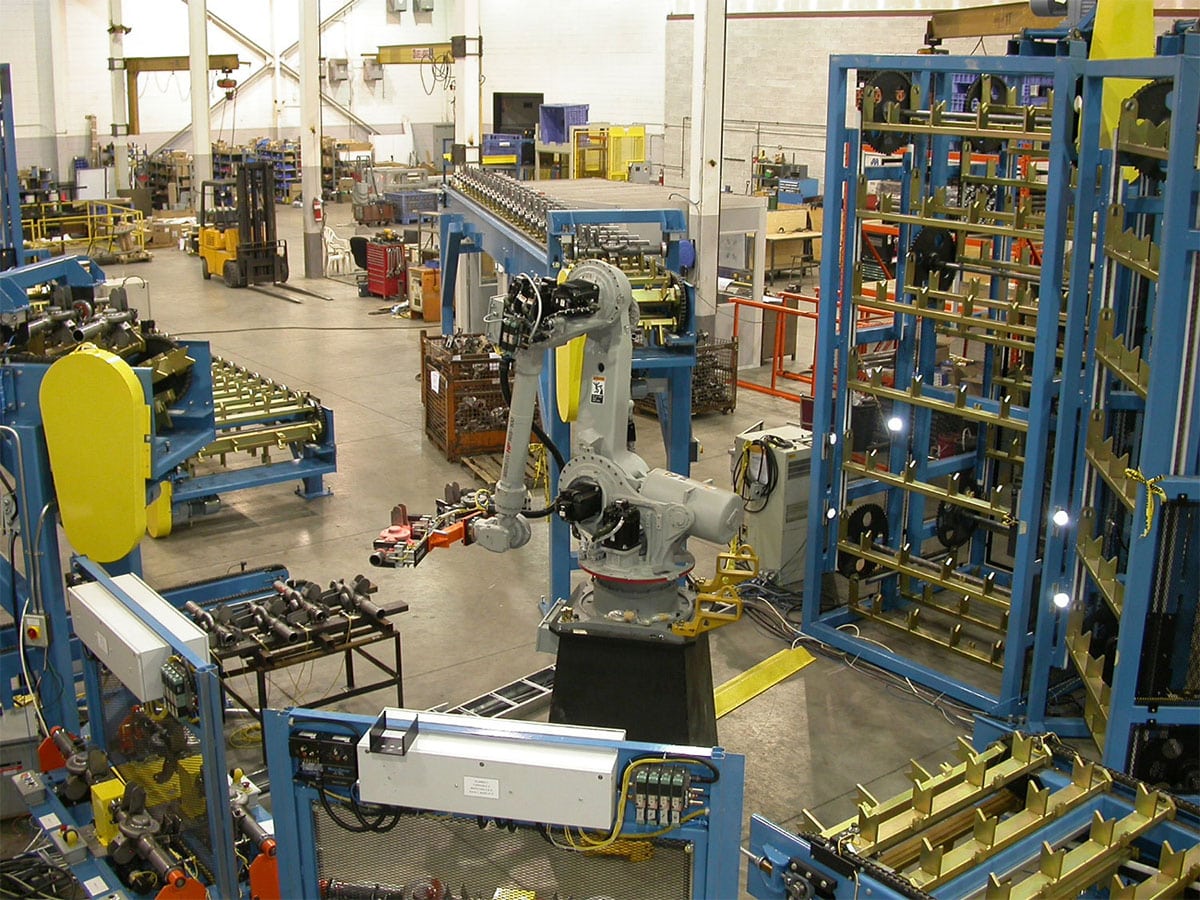Industrial robotics and robots have emerged as key innovations and efficiency drivers in today’s ever-changing manufacturing landscape. The integration of industrial robotics in manufacturing processes has transformed the field, offering a wide range of benefits to businesses seeking to enhance productivity, quality, and competitiveness. With the need for automation solutions increases manufacturing robots are playing an increasing part in shaping the future of manufacturing.

Manufacturing robots (also known as industrial robots) are special machines designed for various purposes in the manufacturing industry. They can be used for welding and painting, assembly, picking and placing, packaging and other things. Industrial robotics, the field of study and application of these robots concentrates on improving effectiveness and precision in manufacturing processes.
Automated Solutions Australia, a company that specializes in creation of industrial robots to provide flexible solutions for manufacturing customers, is on the leading edge. The robots used by ASA’s industrial manufacturing have been designed to help customers gain an advantage on the market by boosting efficiency and quality. The industrial robots offered by ASA built on best practices and an emphasis on quality are used by companies across diverse industries like automotive, electronics, pharmaceuticals and many others.
Industrial robots offer many advantages. One of the major benefits is the significant enhancement in efficiency and productivity. Industrial robots are able to perform repetitive tasks with accuracy and a consistent manner. This leads to increased production rates as well as shorter durations of cycle. It not only increases productivity, but it assists businesses in meeting the ever-growing demands of customers.
Industrial robots can also aid in higher quality control throughout manufacturing processes. Robots are able to perform tasks with greater accuracy and more quality and reliability. This results in better-quality products. This results in a higher level of customer satisfaction as well as a stronger image for the company.
In addition to their efficiency and quality, industrial robots can provide cost-saving advantages. While the initial investment in manufacturing robots may seem substantial, the long-term cost savings are significant. By streamlining production processes and reducing the demand for manual labor, businesses can reduce operational costs and achieve a quick ROI. In addition, industrial robots can be operational 24/7, optimizing the utilization of resources and decreasing the costs per unit of production.
Industrial robots’ impact on workplace is a significant benefit. They have been developed to minimize noise. This results in an easier and more peaceful working space. Furthermore their speed and precision contribute to making the workplace safer by reducing the risk of injuries and accidents.
The integration of industrial robots is also a key factor in the creation of jobs and the future of work. While there may be concerns about automation displacing human workers, the reality is that industrial robots open up new avenues for job opportunities. These include jobs in robot programming, maintenance and supervision as well as roles which support the manufacturing process using robotics.
All sectors of business benefit from this technology as the manufacturing industry is embracing the possibilities of industrial robotics. With its ability to enhance efficiency effectiveness, quality, and price industrial robotics is changing the way products are manufactured and setting new standards for high-quality products in the market.
In conclusion, the rise of industrial robots and manufacturing robotics marks a paradigm shift in the manufacturing sector. The integration of these advanced technologies has enabled businesses to attain unprecedented levels of productivity as well as precision and competitiveness. Industrial robots will play an important role as the demand for automation grows. They will help in shaping the future of manufacturing and drive technological innovation.